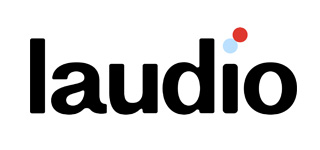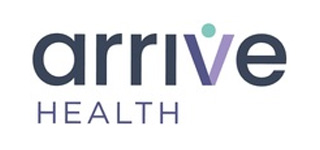With a decade of experience working at the state, federal, and commercial payer levels and a background in both strategy and digital programs, Elizabeth Hyatt is well-positioned to discuss the ever-evolving payer-provider dynamic in the US healthcare system.
At TytoCare, her role is focused on payer partnerships and helping to design virtual care programs that bring value back to the organization. The company specializes in medical devices and AI software which enables providers to bring primary care into the home.
During the interview, Elizabeth outlines three key areas where she and TytoCare can bring value to payers.
“One is cost of care,” she tells us. “I feel like we’re all impacted by affordability and the rising cost of medical care for both consumers and payers… we can bring value around reducing total cost of care by bringing primary care into the home, making it more accessible, and creating more access to members who might not be able to. They [often] don’t have transportation and they can’t go in person, or their only option is to go to an emergency department due to the time in which they need care.”
To discover the other two areas, as well as Elizabeth’s views on what is needed from a payer partner to drive progress and the role of virtual care moving forwards, tune in to the full conversion with Fierce Healthcare’s Rebecca Willumson.
Rebecca Willumson:
Hi there. I’m Rebecca Willumson. I’m the publisher of Fierce Healthcare, and I’m here today with Elizabeth Hyatt, Director, Payer Solutioning at TytoCare. Elizabeth, thank you for joining me.
Elizabeth Hyatt:
Thank you, Rebecca, for having me.
Rebecca Willumson:
So before we begin, can you tell me a little bit about yourself and TytoCare?
Elizabeth Hyatt:
Sure. So I’ve had over 10 years of healthcare experience working at the state, federal, and commercial payer levels with a background in both strategy and digital programs. And when I joined TytoCare two years ago, my role is really focused on our payer partnerships, really helping design virtual care programs that bring value back to the organization, looking at different cohorts use cases and really measuring that. ROI, TytoCare is a virtual care health company that has both a medical device and an AI software that brings primary care into the home. So we’re able to replicate in-person exams virtually to have a very high quality virtual care exam with a clinician anywhere in the world.
Rebecca Willumson:
That’s great. So tell me, where do you see the greatest opportunity in working with payers?
Elizabeth Hyatt:
Yeah, so I think of three areas of where we can really bring value with our payer partners. One is cost of care. So I feel like we’re all impacted by affordability and the rising cost of medical care for both consumers and payers. And so I really think we can bring value around reducing total cost of care by bringing primary care into the home, making it more accessible, and really creating more access to members who might not be able to, they don’t have transportation and they can’t go in person, or their only option is to go to an ED due to the time in which they need care. Or maybe that’s the only thing that they know is to use high cost settings to access primary care. So I really think by creating more access and bringing care into the home, into communities, it creates a lot more opportunity to drive better care steerage for the payers and have more access to primary care.
The second is around experience. A speaker earlier yesterday had mentioned that 73% of Americans are dissatisfied with their healthcare experience. And at TytoCare, we’re very focused on the user experience, developing really thoughtful member journeys around how to educate and build awareness of virtual care with our members. And I really think having accessible, timely care to primary care really helps improve that member experience because they feel confident in the care that they’ve received. That I think ultimately downstream really helps the brand of the payer that we’re partnering with. And third is really around provider enablement. There’s been a lot of trends in the payer world now around payers either partnering with providers or purchasing providers. And our tool at the end of the day really helps focusing on making the provider’s job easier during that virtual visit, making them more confident in the diagnosis that they’re providing because receiving that clinical data. So I really think it’s a provider enablement tool, and as payers are thinking about their network strategy and really how to empower their providers to move more into virtual care, I think this tool provides a lot of confidence for providers and payers as well. So I think those are the areas that I think we have the greatest opportunity.
Rebecca Willumson:
So tell me, what do you need from a payer partner to really make the relationship work?
Elizabeth Hyatt:
I think that’s a great question. I’ve sat on both sides of the fence in my career, both working at a payer and now working at a tech vendor. And I have a lot of empathy for the partnerships that are built between those two organizations. I think the first one is really shared vision. The payer and the stakeholders and leadership really have a shared vision with that vendor. For us at TytoCare, it’s really about bringing primary care into the home and having that shared vision of deepening access and really investing in primary care upfront versus the cost of higher specialty care. I think having that shared vision is really critical. I think the second is around collaboration and having things like being able to share data amongst the payer and TytoCare sharing resources, roles and responsibilities. So really being collaborative with each other to really understand how can we partner and really bring value back to the consumer.
But I think at TytoCare, we really try to minimize the lift on the payer and own some of those operations and fulfillment and engagement so that our partnerships are really focused on ease of access. And then I think the third thing is really just having that champion at the payer. Having leadership buy-in having multiple lines of business, multiple leaders really support our partnerships, support the investment that they’re making in TytoCare. I think ultimately having organizational resource alignment and that shared vision really drives very successful partnerships from both the payer and the tech vendor side.
Rebecca Willumson:
Very good. Now as we’ve reported over the years, fewer and fewer people in the US regularly visit a primary care provider. Is virtual care a part of the solution?
Elizabeth Hyatt:
Yeah, I think that’s a great question and insight. I had read about 30% of Americans don’t have an assigned PCP, and so access is a really huge issue. And I think due to wait times and provider panels being filled, or even just the convenience, having your own time to be able to go and see a primary care physician, I think there’s a lot of challenges that the consumer faces. So I think virtual care is a really good bridge to helping create additional access. But I think the challenge sometimes is how do you make sure that that virtual care visit is high quality and you’re really resolving the issue? And I think that’s really where TytoCare has a market differentiator compared to other virtual care organizations is we’re really able to take a higher step in that experience by collecting that clinical data, the provider’s able to listen to the heart, to the lung, look in the ear, assess the throat. So we’re able really to provide that high quality virtual care exam, really replicating that in-person exam with the goal of having high visit resolution and being able to reduce bounce back, which I think saves cost and also saves a lot of frustration on the consumer side where they’re able to resolve that visit. So I think virtual care is a really good bridge around access and availability, but I think it really comes down to the quality of that visit and really being able to resolve that symptom that you’re coming to the physician. Sure.
Rebecca Willumson:
Well, that feels like a good place to stop. Thank you so much for joining me. I appreciate the conversation.



